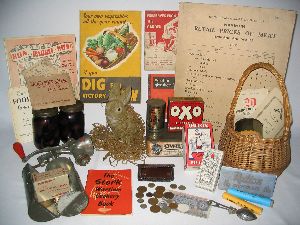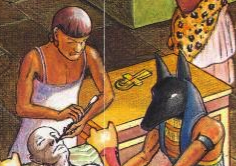
Inexplicably axed by Gove from the 2014 curriculum, my advice is to carry on teaching this highly successful unit focusing on the Home Front. You can shave time from other units to make room for this because you know it works so well and leads to great learning. At KS2 it is often the case that great learning trumps curriculum compliance.
I am less convinced about looking at the post-war decades, except in the context of immigration which would make a great long-term thematic study showing how different settlers have come to these shores since roman times, enriching our lives as if streams pouring oxygen into the lake of Britishness.
The following outstanding lessos have all been graded 1 by an OFSTED history inspector.
- Extending the BBC website on Eric the evacuee A highly engaging lesson in which pupils act as experts to extend the BBC children’s website on evacuation. But to do so they first need to role play a re-union of evacuees in which they reminisce about life during the Second World War. But was evacuation as happy as the BBC’s Eric the Evacuee suggests? Pupils grow to understand the reasons why we have so many photos of smiling evacuees when the reality was sometimes quite different.
- Evacuation. An excellent lesson in which pupils ask questions of evacuation data as the launchpad for their enquiry
- What really happened at VE day street parties and why are they shown differently in the books?
Smart Tasks
- Britain during World War Two – Call My Bluff This activity is designed to promote creative thinking as well as to deepen pupils’ understanding of the objects that are unfamiliar to us but everyday items on the Home Front during World War Two.
- Curator’s dilemma. You are setting up a new museum of Living Through the Second World War on the Home Front. You have been given hundreds of items but can display just eight. Which will they be? Six pupils in role as people who did different jobs at the time then critically appraise the collection from their point of view.
- Christmas for children on the Home Front during World War Two. This Smart Task help pupils investigate how Christmas for children changed over the course of the war. By looking at food, decorations and presents they quickly broaden their prospective to look at the effects of rationing, blackout and the Blitz.
Want to know what’s coming next? Click here to find out
Teaching Life in Britain 1930-45 to Key Stage 2.
Long before the introduction of the National Curriculum, this was always a popular topic. Whilst most schools focus on the war years, a number also look at the 1930s. The evacuation of children and the way people lived through the Blitz continues to fascinate.
As this is one of the very few areas of Key Stage 2 in which the pupils can use oral evidence (local history being the other main one) it is important that children use spoken or written testimony. For most schools the focus for this will be evacuation as this provides an accessible vehicle for looking at different perspectives of the past. Quality literature on this topic abounds and there is a good range of movie film too.
The outstanding lessons featured here are very varied. On the one hand there is a really engaging activity known as spectrum in which pupils, actively learn about the different experiences of the war many people had. On the other is the numeracy related enquiry which asks children to raise their own questions about evacuation based on a line graph. Why did the number suddenly go up a particular point point? Why did they go down equally quickly. The use of drama then helps pupils to empathise with the plight of people from the time.
The lesson on VE day in which pupils have to act as historical advisers to a film maker enables them to contrast images in books as well as contemporary testimony. They realise the dangers of oversimplification. Not everyone’s experience was the same. For those seeking a context for developing higher-order source evaluation skills, then the lesson on propaganda is a tour de force.
Resourcing your topic
If you would like to encourage your pupils to explore interesting images from the Second World War using a Webquest, then help is at hand. The Imperial War Museum, amongst other museums, have produced some excellent new resources and interesting approaches. Pupils can select areas of interest to investigate and can check their understanding using simple drag and drop activities. You can find the site here
This website offers you an excellent summary of the on-line materials that are being made available at lots of museums across the country.
A really interesting scheme of work has been produced by some Cambridgeshire teachers working on a transition project in history
Resources
Artefacts from a Suitcase of History form the basis of a new lesson using strategy called Curator’s dilemma









